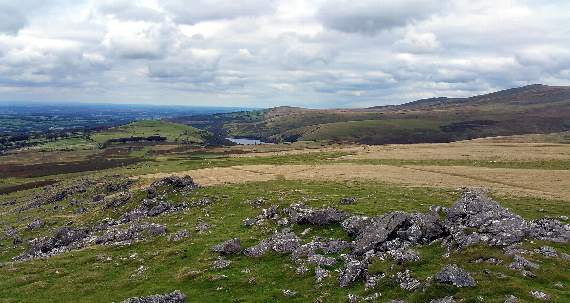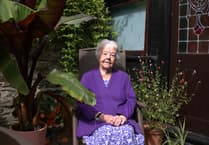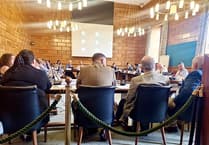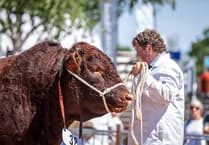Dartmoor National Park head ranger Rob Steemson aims to answer that all important question.
AT 954 square kilometres (368 square miles), Dartmoor is the largest open space in southern England.
It has wild open moorland, granite tors, wooded river valleys, enclosed farmland along with many small towns, villages and hamlets that make up the important communities where some 34, 000 residents live (census 2011) within 14, 245 households.
Housing and planning is an important issue, not just on Dartmoor but nationally. The Dartmoor National Park Authority (DNPA) is charged with the statutory responsibility of producing a Local Plan across Dartmoor which must strike a balance between supporting thriving villages and towns, and conserving the national park.
The new ‘local plan’ will need to have a ‘vision’; a description of what we want Dartmoor to look like in 20 years’ time and November sees the start of the consultation on the local plan review.
Over the last ten years 672 new houses were built on Dartmoor and 22% of these were affordable. 57% of new houses have been built in local centres, 26% in rural settlements and 17% on open countryside.
There are also 1,079 scheduled monuments and 2,565 listed buildings that need to be taking in to consideration from the conservation angle. During 2015/16 DNPA dealt with 620 varied planning applications.
Planning can be a divisive issue and the source of good pub talk but planners do have a challenging job balancing the competing needs of Dartmoor’s community, protecting the area’s internationally important wildlife, landscape and archaeology, and delivering on government priorities around house building and economic growth.
The local plan is the starting point when we make decisions on planning applications.
It contains a broad range of policies that cover things like extensions and conservatories, conversions and new houses. It will identify land for future housing or employment development in Dartmoor’s larger towns and villages.
It covers farming and other business. It also considers the natural and historic environment and resource issues like energy and quarrying.
The involvement of those people and organisations with an interest in the future of Dartmoor is also really important.
The earlier we can get a feel for what issues people want to raise, what communities’ priorities are, and what people think currently works and what doesn’t, the better.
The current consultation isn’t therefore about policies, it’s about issues.
We’d like to talk with you, and are holding a series of community drop-in events through November:
Endecott House, Chagford, TQ13 8AJ — today, Thursday, November 10, 4.30pm — 8pm
Princetown Church, PL20 6QT —Monday, November 14, 4pm —8pm
Moretonhampstead Community Club, TQ13 8NQ —Wednesday, November 16, 4pm —8pm
Buckfastleigh Town Hall, TQ11 0DD — Tuesday, November 22, 4pm — 8pm
Ashburton Town Hall, TQ13 7QQ —Wednesday, November 23, 4pm — 8pm
It is challenging getting views on planning policy, trying to persuade you that it is important, and that planners will listen.
It can be difficult to persuade people that if planners reached a different view on an application it doesn’t mean they didn’t listen; their job is to weigh up often conflicting priorities and that can mean some people don’t agree with their conclusion.
It often isn’t recognised that if you don’t think a decision is the right one, you could change that in the future by talking with the planners about the local plan.
The process of the producing the new local plan will take a couple of years and involve two further stages of public consultation, at which point we’ll have draft policies for you to comment on.
So please take a look and support my colleagues and help shape up the area you either live in or visit regularly.
The drop-in events are just one way you can contact us about the local plan.
You can visit www.dartmoor.gov.uk/ localplan to find out more about the review. You can follow us on Twitter or Facebook. You can also email us at [email protected]





Comments
This article has no comments yet. Be the first to leave a comment.